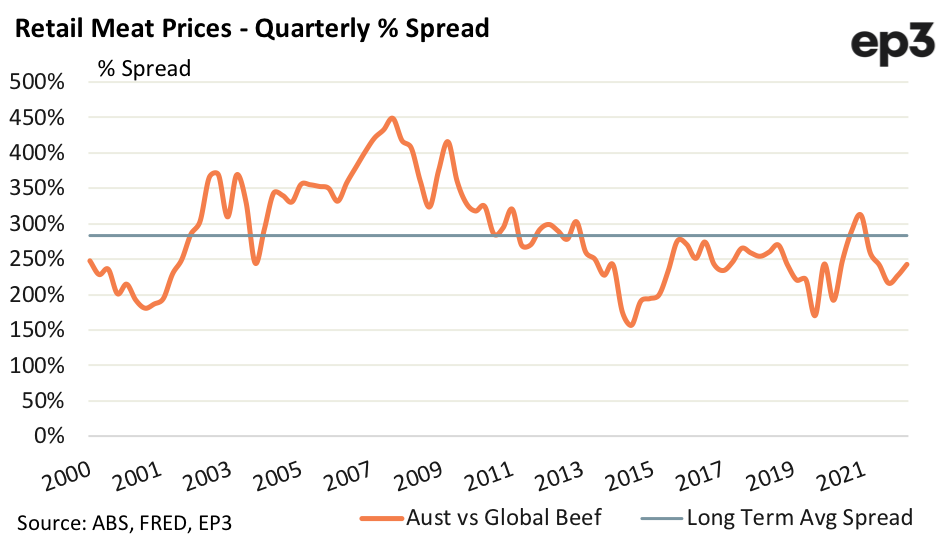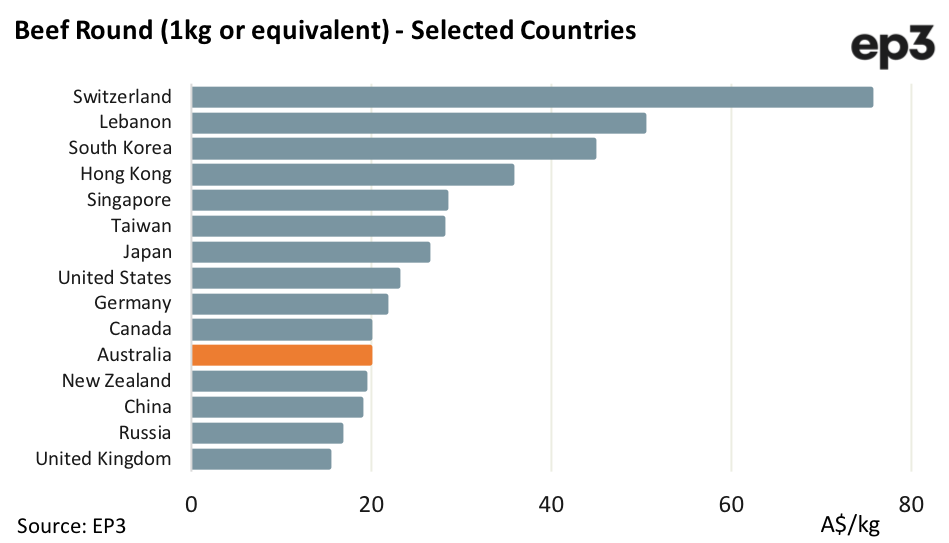What’s that got to do with the price of beef in China?

The Snapshot
- The ABS consumer price index shows that average retail beef prices have lifted by nearly 74% since 2012.
- However, global beef prices have lifted by 98% over the same time frame.
- In relative terms, current Australian retail beef price spreads compared to global retail beef prices are running below the long-term average levels.
The Detail
Over the last decade the price of Australian beef at the retail level has risen dramatically. Australian Bureau of Statistics (ABS) figures for the consumer price index shows that average retail beef prices have lifted by nearly 74% since 2012. The 2022 quarter two retail beef price reported by ABS was A$27.06/kg, which is a significant bite out of the household budget when compared to the $15.59 retail beef was costing the Aussie consumer in quarter two of 2012.
In contrast to average global retail beef prices, the Australian consumer is paying a significant premium. However, the global consumer isn’t without complaint as global retail beef prices have lifted more aggressively than Australian beef prices over the last decade, rising by 98% since 2012 from A$3.98/kg to A$7.89/kg, 24 percentage points higher than the beef price rise seen locally.
Analysis of the percentage price spread of Australian retail beef to global retail beef highlights that Australian beef was at its most expensive (in relative terms) just as the global financial crisis (GFC) was developing in late 2007. Indeed, the premium spread peaked at 448% in quarter two of 2008, trending downwards throughout the GFC and bottoming out at 157% in the last quarter of 2014.
The long-term average spread between Australian beef prices to global beef prices sits at a premium of 284%, and much of the post GFC era saw the Australian beef ratio to global beef prices remain below this long-term average level. There was a short blip above the long-term average at the start of 2021 to see it hit 312%, but presently Aussie retail beef prices remain below the line at a 248% premium to the global price.
Despite the high prices being paid by the Australian beef consumer, a comparison of beef round* prices across selected countries in Europe, North American and Asia shows that there are quite a few citizens paying a lot more for their beef. Current Australian pricing shows that a kilogram of beef round (or equivalent) averages nearly A$20/kg, but spare a thought for the poor Lebanese or Swiss consumer paying around A$50/kg to A$75/kg, respectively, for a similar cut.
And what does that have to do with the price of beef in China? Well, they’re a little more fortunate paying around A$18.80 for a beef round cut, or its equivalent.



